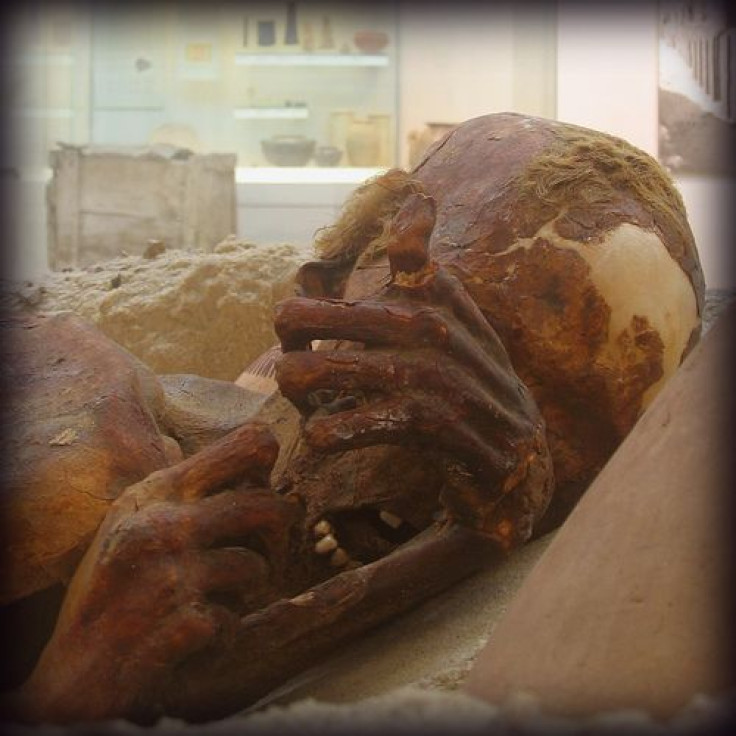Virtual Autopsy of Mummy Reveals Clues About 5,500-Year-Old Murder Mystery

The ancient Egyptian mummy officially named the Gebelein Man, nicknamed Ginger by the countless visitors who have seen him over the past century because of his red hair, is one of the best-preserved mummies in the world. Exhibited at the British Museum and the second-most popular exhibit after the Rosetta Stone, many visitors have viewed the hole in his back.
Forensic scientists have finally begun to piece together the circumstances of his death: he was murdered. The museum has currently created a virtual autopsy table so that visitors, experts and amateurs alike, can help piece together clues about his life and death.
For years, no one knew what caused the puncture below his shoulder blade. Now, modern medical technology have helped scientists figure out some things. They believe that Ginger was a victim of murder during peacetime. Because he had no defensive wounds, they believe that he was taken by surprise when he was literally stabbed in the back.
"You can see that the rib immediately under the shoulder blade has been shattered in such a way that it has splintered into his tissue. This shows immense force," said Daniel Antoine, the museum's resident expert on human remains. "The force is such that the blade would have penetrated through his lung."
The injury would have been made by a sharp piece of copper or flint that is at least 12 centimeters (four and a half inches) wide and 2 centimeters deep (three-quarter inches). Because of the severity of the injuries and the fact that it never healed, forensic scientists are fairly certain that the wound was the cause of his death.
Ginger died in about 3400 BC, and forensic scientists believe that he was between the ages of 18 and 21. He was buried in a shallow grave in the town of Gebelein. Though no one tried to preserve his body, the dry sand and heat did an excellent job of preservation. It is believed that Ginger is the reason that the Egyptians developed the idea of using salt in order to preserve corpses.
Curators had not even seen Ginger's body for a century. He was given a CT scan for 30 seconds, which was just enough time for forensic scientists to gather enough information to analyze his remains. They say that his preserved internal organs mean that they can conduct a surprising amount of analysis.
"We should be able to analyse his last meal," Renee Freidman, a curator for Early Egypt in the museum, said to reporters. "We can test his hair and fingernails to see what he ate in his last three months."
Ginger was discovered in 1896. It is unclear whether his murderer was ever brought to justice.



























